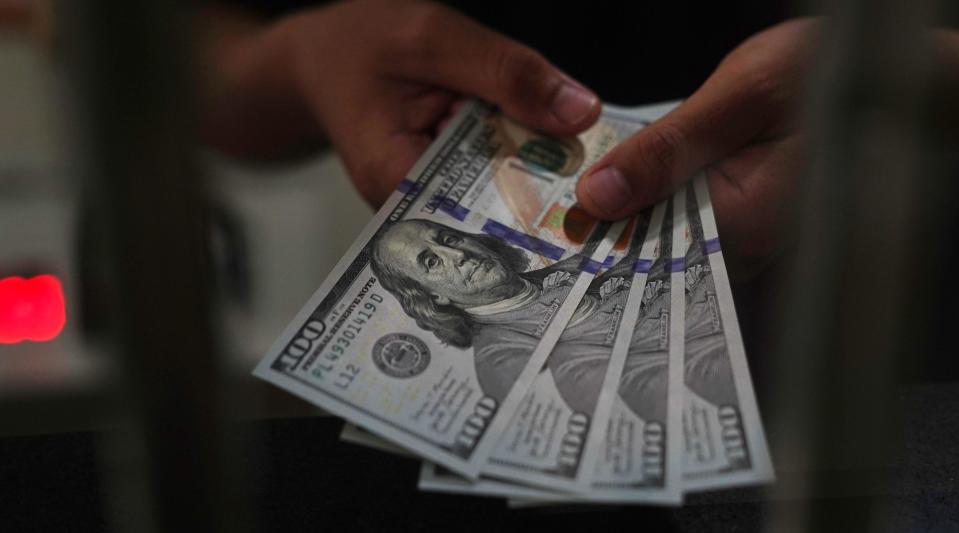'Rewards for the brave' who dare to bet on US office S-REITs now: DBS

“We believe that at 0.5x P/B, it is close to the bottom and awaiting a catalyst.”
The US office market remains in a state of uncertainty, but headwinds are largely known and priced in, says DBS Group Research analyst Rachel Tan. She believes there are some bright spots amid a gloomy outlook, with rewards for the brave who dare venture into US office Singapore REITs (S-REITs).
The US-listed office REITs are currently trading at 0.75x price-to-book (P/BV), close to the lows seen during the global financial crisis (GFC), writes Tan in a March 27 note. “While the US office S-REITs do not have sufficient trading history stretching back to the last crisis, we believe that at 0.5x P/B, it is close to the bottom and awaiting a catalyst.”
Tan believes the re-rating catalyst lies in the Fed moderating or pausing interest rate hikes, which will also drive a turnaround in the share price.
DBS’s preferred pick is Keppel Pacific Oak US REIT (KORE) CMOU, which has shown more resilient operations compared to its peers. On the other hand, Manulife US REIT (MUST) BTOU has de-rated the most and would probably see the overhang lifted once it resolves its capital management issues, writes Tan.
Similar to the broader industry trend, the US office S-REITs’ submarkets’ optimism has declined, especially towards the end of 2022, reversing the strong start at the beginning of that year.
Based on JLL’s 4Q2022 US office market insights, the US office S-REITs submarkets with a positive/improvement outlook contributes 21% to 60% of net property income (NPI) and cash rental income (CRI), down from 35% to 82% in 1Q2022.
KORE continues to lead its S-REIT peers with positive submarkets contributing the majority of its NPI/CRI, mainly from the Seattle market, which comprises 42% of KORE’s NPI.
This is followed by Prime US REIT (PRIME) OXMU, with positive submarkets contributing 35%, mainly from Atlanta.
Lastly, MUST’s positive submarkets fell to only 21% from 35% in 1Q2022, as Washington and Virginia are no longer positive submarkets.
DBS has “buy” call out on all three names, with target prices of 65 US cents (86.28 cents) for KORE, 63 US cents for PRIME and 45 US cents for MUST.
MUST in turmoil
On March 27, MUST’s unit price fell yet again by 14% to close at 22 US cents.
To analysts Rachel Tan and Derek Tan, the decline may be possibly attributable to the rumours that the tentative transaction between Mirae Asset Global Investments and MUST, both presumed to currently be in talks (for a possible capital injection), could have fallen through.
However, DBS understands that the discussions are still ongoing. “While investors are impatient for a potential conclusion of the strategic review of this proposed transaction, we believe the process takes time and any subsequent disclosure of a potentially positive outcome of the review would be viewed as a positive for MUST, should the transaction be able to help it recap its balance sheet. However, the devil is still in the details.”
There were also fears earlier this week that short sellers’ were stepping up their bearish bets against the US office segment with the expectation of a potential credit tightening following the US regional banking crisis.
According to DBS, US office S-REITs’ lenders comprise mostly local and Asia-Pacific banks, except for PRIME. “Though PRIME’s lenders comprise mainly US financial institutions, these do not fall into the high-risk list. Moreover, the facilities are extendable to 2024-2026, and it has undrawn credit lines of US$196 million ($260.15 million). In addition, US office S-REITs have refinanced/locked in refinancing debt that is expiring in FY2023. As such, any refinancing risk in the near term is limited.”
All-round declines
Portfolio occupancy has seen a progressive decline throughout FY2022 to end the year at just a little below 90%.
This is apart from KORE, which saw occupancy rise to 92.6% from 91.9% as at end-2021, partly due to the disposal of Powers Ferry and Northridge Centre.
Following the asset valuation decline in 4QFY2022, both MUST and PRIME saw gearing cross 40%.
MUST’s gearing spiked to 49%, given a higher valuation decline of 11%, while PRIME’s gearing increased to 42%, from 37.9% in 4Q2021, with still some buffer.
On the other hand, KORE’s gearing stood at 38.2%, mainly due to minimal asset valuation decline and the disposal of some smaller assets.
Headline FY2022 distribution per unit (DPU) fell by 3% to 11% y-o-y, in line with the decline in vacancies and the increase in interest costs.
“However, we note that KORE has converted its management fees in units to be paid out in cash instead, while MUST has announced a 9% retention in distributions. Excluding these adjustments, we note that FY2022 DPU fell by 1% to 7% y-o-y, with the lowest decline from KORE, followed by PRIME and then MUST,” says Tan.
As at 1.19pm, units in KORE are trading 0.5 US cents higher, or 1.37% up, at 37 US cents; while units in PRIME are trading 0.5 US cents higher, or 1.59% up, at 32 US cents; and units in MUST are trading 1 US cent higher, or 4.76% up, at 22 US cents.
See Also:
Click here to stay updated with the Latest Business & Investment News in Singapore
Accumulate Sea and Bukalapak near bear-case TPs of US$68 and IDR255, says DBS
Get in-depth insights from our expert contributors, and dive into financial and economic trends

 Yahoo Finance
Yahoo Finance 